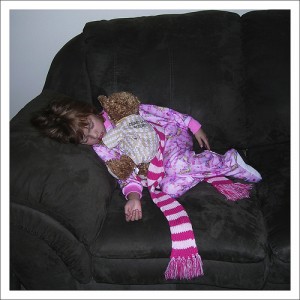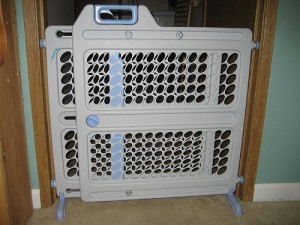 Protecting a child from harm is one of the great concerns of every parent. Parents of young children make sure to know where the little ones are, who they’re with, and what they’re doing at every hour of the day. But what about at night? It’s easy to take it for granted that a child will stay put in his bed at night, but with the prevalence of sleepwalking (18% of the population, with incidents being more likely for children than adults), it may not be a safe assumption. If your child is prone to sleepwalking, his safety is at risk. Take a look at these tips for keeping your child safe even when he or she is sleepwalking.
Protecting a child from harm is one of the great concerns of every parent. Parents of young children make sure to know where the little ones are, who they’re with, and what they’re doing at every hour of the day. But what about at night? It’s easy to take it for granted that a child will stay put in his bed at night, but with the prevalence of sleepwalking (18% of the population, with incidents being more likely for children than adults), it may not be a safe assumption. If your child is prone to sleepwalking, his safety is at risk. Take a look at these tips for keeping your child safe even when he or she is sleepwalking.
Low-tech & High-tech Solutions for Keeping Track of Your Child
Since staying awake and watching your child every night would be overkill (and highly impractical), find ways to keep yourself apprised of your child’s whereabouts at night without actually having to stay awake and stand guard.
- High-tech: Programmable motion sensors can alert you to your child’s movement around the house at night.
- High-tech: Place some kind of noisemaker around your child’s bed, such as a string fence with bells, and use a baby monitor app (available for Android or iPhone) that will place a call to the phone number of your choice when your child gets up and triggers the noisemaker.
- Low-tech: Hanging a wind chime on the child’s doorknob is another very simple method to alert you to your child’s movement at night.
Minimize Sleepwalking Risks
If your child succeeds in leaving his room at night without your knowing it, various hazards throughout the house could put him at risk, so think ahead and ensure that your home is safe for a sleepwalking child. Breakable or sharp objects should be kept out of reach, and the floors should be clear of tripping hazards. A sleepwalking child should not sleep in the upper berth of a bunk bed where he could easily fall while attempting to get up at night. If your child sleeps upstairs, make sure to block off the stairs. A safety gate may be adequate for this purpose if your child is smaller.
Keep Your Child In
 It is of vital importance that a child not leave the house at night while sleepwalking. Keep doors and windows locked. An older sleepwalker may be able to disengage a lock in his sleep, so a more complicated lock or a lock to which you can hide the key may be a better option. If your house has a security system, be sure to arm it at night so that you will be alerted if a door or window is opened.
It is of vital importance that a child not leave the house at night while sleepwalking. Keep doors and windows locked. An older sleepwalker may be able to disengage a lock in his sleep, so a more complicated lock or a lock to which you can hide the key may be a better option. If your house has a security system, be sure to arm it at night so that you will be alerted if a door or window is opened.
An Ounce of Prevention…
As they say, an ounce of prevention is worth a pound of cure. Try to identify the stressors that cause sleep-walking in your child. Fatigue? A full bladder? Too much television or computer use just prior to bedtime? Try keeping a record of what your child has been doing and how he has been sleeping over the course of several weeks. Make a note of each night that he experienced a sleepwalking incident. Eventually you may notice a trend that could indicate what causes the episodes. Make sure your child is getting enough sleep and sticking to a healthy routine. If you’re unable to identify the causes of your child’s sleepwalking, or your attempts to prevent it are continually unsuccessful, consider consulting a medical professional.
Photo credits:
http://www.flickr.com/photos/areyoumyrik/271971594
http://www.flickr.com/photos/strocel/3529615848/

 We serve the entire Phoenix area, including
We serve the entire Phoenix area, including  We accept Cash, Checks and Major Credit Cards.
We accept Cash, Checks and Major Credit Cards.